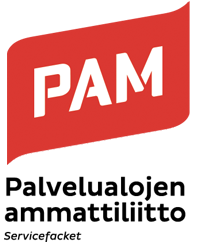Can PAM apply itself?
Service Union United PAM is launching negotiations on how to implement the competitiveness contract in service sectors. The question of increasing working hours will probably turn out to be the trickiest issue on the agenda.
The week before last, the whole of Finland turned its attention to the PAM Executive Committee meeting, which delivered the following decision: PAM would, after all, start negotiating with service sector employers on how to apply the clauses in the ‘competitiveness contract’ within PAM’s sectors.
- The first meetings with employer organisations will take place at the turn of March and April. These will focus on preliminary discussions to form a basis for negotiations and on setting the schedule for further talks, explains Jaana Ylitalo, PAM’s Collective Bargaining Director.
PAM is still seeking proposals from its members for more specific negotiating objectives. A survey of local branches and employee representatives came to an end this week. The situation was also discussed last week by Agreement Sector Commissions made up of employees in each sector.
One of the most complicated issues in the negotiations is the increase in working hours. It may sound simple enough to increase annual working hours by an average of 24 hours, but the reality is different. Ylitalo points out that there are several working hours systems and regulations in PAM sectors, such as weekly working hours and public holiday models. In other words, finding a panacea to suit all sectors is highly unlikely. There are several alternatives.
A particularly thorny question is the issue of increasing working hours for part-time employees. Ylitalo emphasises that the competitiveness contract stipulates that this will be done without changing the income level, which means that part-time employees’ hourly wages should not decrease. According to Ylitalo, the exact terms and conditions of the ‘survival clause’ will also present a challenge. The survival clause is being developed to mitigate the situation of companies facing financial difficulties.
The deadline set for contract application negotiations is the end of May. At that point, we will see whether any results have been achieved and, if so, it is only then that PAM’s Executive Committee will decide on these.
In February, the labour market confederations representing employees and employers negotiated a deal, which is not very detailed. Sectoral organisations, such as PAM, will then negotiate how to specify the package in the form of clauses for collective agreements in each individual sector. Finally, the parties will see how many sectors were able to reach an agreement. This is how comprehensive collective agreements have been dealt with for decades now, regardless of whether they have been called ‘comprehensive incomes policy settlements’, ‘the pact for employment and growth’ or ‘the competitiveness contract’.
Had PAM refused to take part in the application negotiations, the entire competitiveness contract would have fallen through, as the employer side would have concluded that the proportion of Finnish employees represented was not large enough. Many thought that this would have been a good alternative – but it ran the risk that the same impairments, and perhaps even a bagful of new ones, would have been introduced as part of sectoral negotiations. Moreover, the Finnish Government might have enacted laws to bring about austerity measures and, for instance, a unilateral increase in local bargaining and employees would not have had much of a chance to influence decisions collectively.
- We had a very good, open and thorough discussion at the Executive Committee meeting. Based on that, we considered that it would be better to see the process through and start negotiating collective agreements. This way, we are in a better position to influence the contents, PAM President Ann Selin summarised once the decision was made.
Pros and cons of the competitiveness contract
The pros
- PAM gets to negotiate the application of the contract in service sectors. Had the contract fallen through, it would presumably have spurred the Government on to make unilateral decisions on austerity measures, such as the ‘mandatory laws’. It could also have attempted to reduce the possibilities of trade unions to defend employees by legislative means.
- The additional cuts of 1.5 billion euros that were threatening public services and unemployment security will be cancelled.
- If exports take an upturn as a result of the reductions in companies’ costs, new jobs may also be created in service sectors.
- The change security scheme for those made redundant will improve slightly: many would receive support for finding employment and occupational health care would continue for a period of six months from termination of employment.
- There is no need to negotiate any impairments other than those agreed as part of the competitiveness contract, which means that previously suggested cuts in premium pay levels will not be implemented.
The cons
- Annual working hours will increase by an average of 24 hours without any pay increase. It remains to be seen what this will mean for part-time employees.
- There will be a long wait for the next pay increases: the validity of previous agreements will be extended by 12 months.
- Employees’ tax-like charges (earnings-related pension and unemployment insurance contributions) will increase. We will not know whether the Government will offset these losses of income with tax reductions until after the application negotiations.
- The ‘survival clause’ may bring about impairments in the terms and conditions of employment in companies facing financial difficulties, which would otherwise lead to statutory cooperation negotiations on staff reductions.
Further information: pam.fi, sak.fi
PAM’s final terms for the negotiations
1 PAM demands that the position of part-time employees be safeguarded if annual working hours are to be increased by 24 hours.
2 The ‘survival clause’ intended for companies facing financial difficulties must be formulated in such a way that it will not become an automatic method for companies to deteriorate the terms and conditions of employment on flimsy grounds.
3 Shop stewards’ rights must be agreed such that they will have genuine possibilities to be equal negotiating partners with corporate management.
4 A clause stipulating that an employee’s own notice would be sufficient in cases of short-term sick leave must be included in collective agreements.
Text:: Tuomas Lehto


